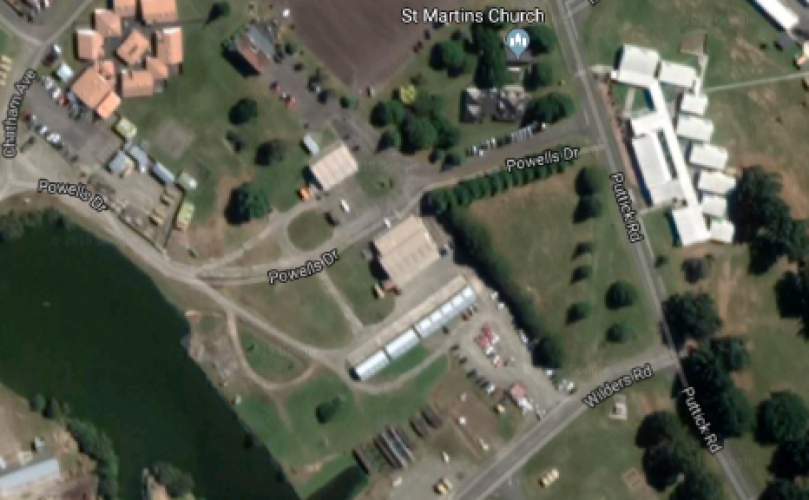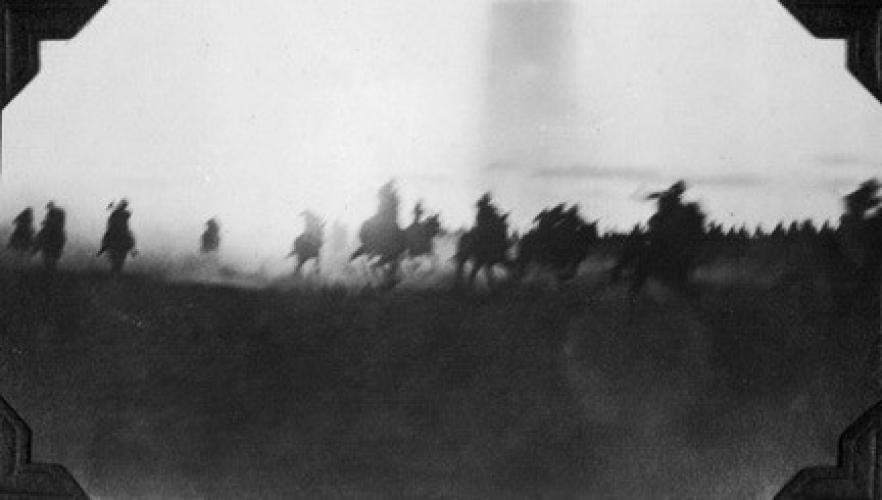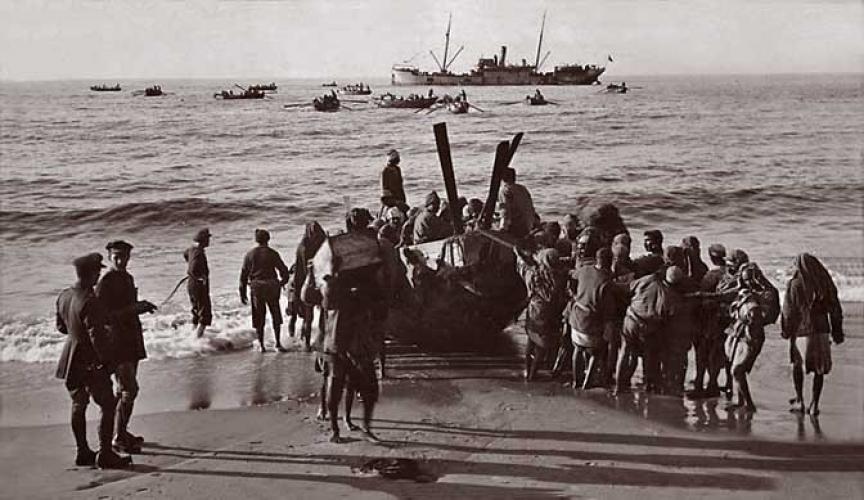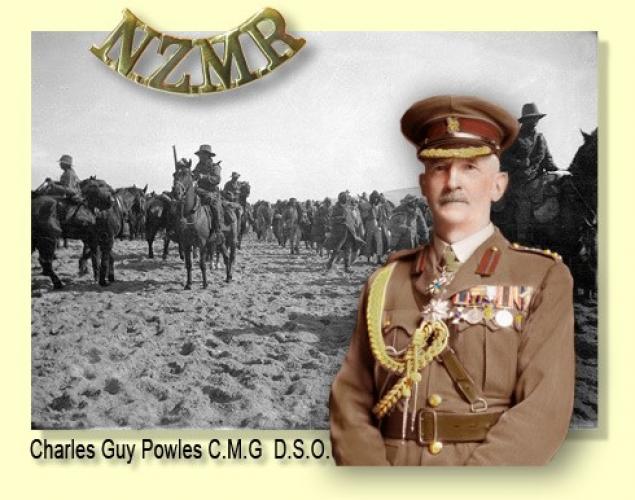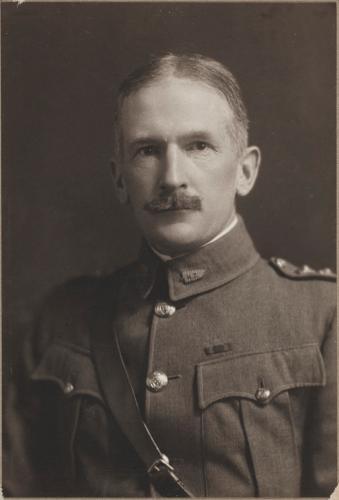272 Powles Avenue Linton Military Camp Palm Nth, aerial view 2018
Reason for the name
This street was named in honour of Lieutenant Colonel Charles Guy Powles CMG DSO who fought in the Boer War and World War 1. Most streets within NZDF Camps and Bases are named in honour of prominent people, battles, campaigns, ships, aircraft and places creating a rich history of our military service.
Lieutenant Colonel Guy Charles Powles was born in Wellington on December 15 1872. Educated at Wellington College. Was a farmer from 1891 to 1910. He fought in the South African War and the First World War.
He was appointed OC Central Command in April 1924. He held the Queen's Medal with four clasps for service in South Africa, the CMG, DS0, 1914-15 Star, British War Medal and Victory medal. His other decorations include the Order of the Nile and he was ADC for the King. After the end of WW1 he was appointed second in charge of the instruction camps at Trentham and in April 1922 he went to General Headquarters as staff officer in charge of "A" Branch, where he remained until in 1923.
He was later appointed Chief of General staff with the rank of Colonel. He was principal of Flock House training school from 1930-1935. In 1940 he was appointed commandant at Waiouru Army Training Camp. He wrote the history of the New Zealanders in "The New Zealanders in Sinai and Palestine." (1922) After his retirement from the army he took up sheep farming at Te Horo. He had three children, one of whom was Sir Guy Powles New Zealand's first Ombudsman and High Commissioner in Western Samoa. Colonel Powles died on June 17 1951.
Author: The Poppy Places Trust
Guy Powles held the post of Brigade Major of the NZMR at the beginning of hostilities in 1914, and promoted to Lieutenant Colonel during the conflict. In the montage in the gallery are the Wellington Mounted Rifles rounding up and bringing in Turkish prisoners after the Battle of Rafa, this image is one of the many photographs taken by the Colonel during the campaigns. His foreground picture was taken in New Zealand much later in 1927.
The most lasting tribute to Charles Guy Powles must be his knowledgeable and informative accounts of the New Zealand Mounted Rifles during the Desert Campaigns of World War One. Published directly after the Great War "The New Zealanders in Sinai and Palestine" written in association with the compiler, Major A. Wilkie W.M.R., and the further publication, "History of the Canterbury Mounted Rifles1914-1919" are recognised as authoritive works on the actions and deeds of the Brigade.
Not only was Colonel Powles a competent leader and soldier he is also remembered as a photographer and the owner of his trusted steed "Bess", the only horse to leave New Zealand for the Great War in the first detachment that returned back to New Zealand at wars end. (A similar distinction is accredited to "Major" the only horse to return to New Zealand after the Boer War in South Africa). Bess was to be Guy's mount for the entire conflict in the desert.
Although most Brigade horses were either sold or destroyed after the armistice in 1918, the Colonel took Bess on to England for the victory celebrations in Europe before returning home. This act of taking "Bess" to the acceptable disease free fields of England meant the horse was considered to be in quarantine and after her stay was cleared of any latent Middle Eastern infections. She was therefore allowed to return home to New Zealand - a situation that was unfortunately not afforded to any of the other Brigade animals.
The logistics of keeping an army in the field is a daunting task, and requires many more men in support than actual combatants engaged on the front line. Even more of an effort is required to support a Mounted Division crossing a hostile desert. The skill of the English Engineers and the Egyptian Labour Force was a magnificent achievement in building a standard 3' 6" gauge railway line and an associated 12" fresh water pipe from the Suez Canal at Kantara across the Sinai into Turkish Palestine. But as the Anzac and British attack lengthened it also gained momentum, and it was a with a welcome sigh of relief for the Army Service Corps when the Anzac Division broke out of the desert and reached the Mediterranean Coast at El Arish. Now shipping that had been unloading supplies from New Zealand to Alexandria could now sail directly to the men in the field and ease the strain on the railway link.
Charles Guy Powles from Headquarters NZMR was on hand to photograph the first event, and he later commented in his book "The New Zealanders in Sinai and Palestine" as the first shipment of frozen mutton arrived from home.
"...About this time our first store ship arrived at El Arish. Native boatmen with their boats from Alexandria were brought over to do the unloading; and it was hoped that our much overworked railway would be greatly eased by these sea-borne rations. But the Egyptian boatmen did not take kindly to the work. This work consisted of rowing their great double ended surf-boats out to the store ship, where she lay at anchor a mile from the shore; loading up their boats with rations and bringing them ashore —the boat being met in the surf by a large party of natives stripped to the waist and carrying a long rope. This rope was attached to the boat as she came through the surf and the team of men then ran away with her up on to the beach. The rate of unloading became so slow that it was seriously considered whether it would be advisable to give up landing stores on the beach, when a happy thought struck someone that the New Zealanders had just received a detachment of Rarotongans, who as Pacific Islanders were no doubt expert boatmen. Enquiries were made and it was found that they were all at home in the water, and they eagerly took on the job of manning two surf boats. These two boats put up wonderful records in unloading stores, shaming the Gyppies into greater effort, and building up a school of competition by which the boat making the greater number of trips in the day, received a flag mounted on a pole which was placed in the bows of the boat and carried throughout the following day.
Our Rarotongans were then withdrawn as there was more important work for them to do. But their example remained for the rest of the campaign, and the victorious flag was carried by the winning boat right up the length of the coast, until Jaffa was reached."Charles son Dr Peter Powles remembers riding “Bess”. (Edited from an article published October 2005).
Dr Peter Powles, in his late 80s then, remembers clearly the excitement he felt as a five year-old when the steamer anchored at Wellington. Not only was his father, Lieutenant Colonel Charles Guy Powels back from WW1 but also on board was something equally exciting. Against all the odds, the Otaki man had returned from the bloody war front with his faithful mount “Bess”.
Many of the soldiers who had volunteered to fight in those distant shores had taken their own horses. The Masterton bred Bess, however, had a break thousands of other New Zealand horses never had and today its memory is a torchbearer to a part of New Zealand history never really told.
“With the Turks driven out of Syria the war had turned. The rifle brigade returned to bases in Egypt. The army decided they could not afford to take the horses back and decided to sell them to the wogs. The locals were known to treat their animals harshly,” said Dr Powles .
The book ‘The New Zealander's in Sinai and Palestine’ written by his father Lt. Colonel Powles in 1922 captures that special relationship between the Kiwi blokes at war and their horses, and provides an understanding of what was to happen


